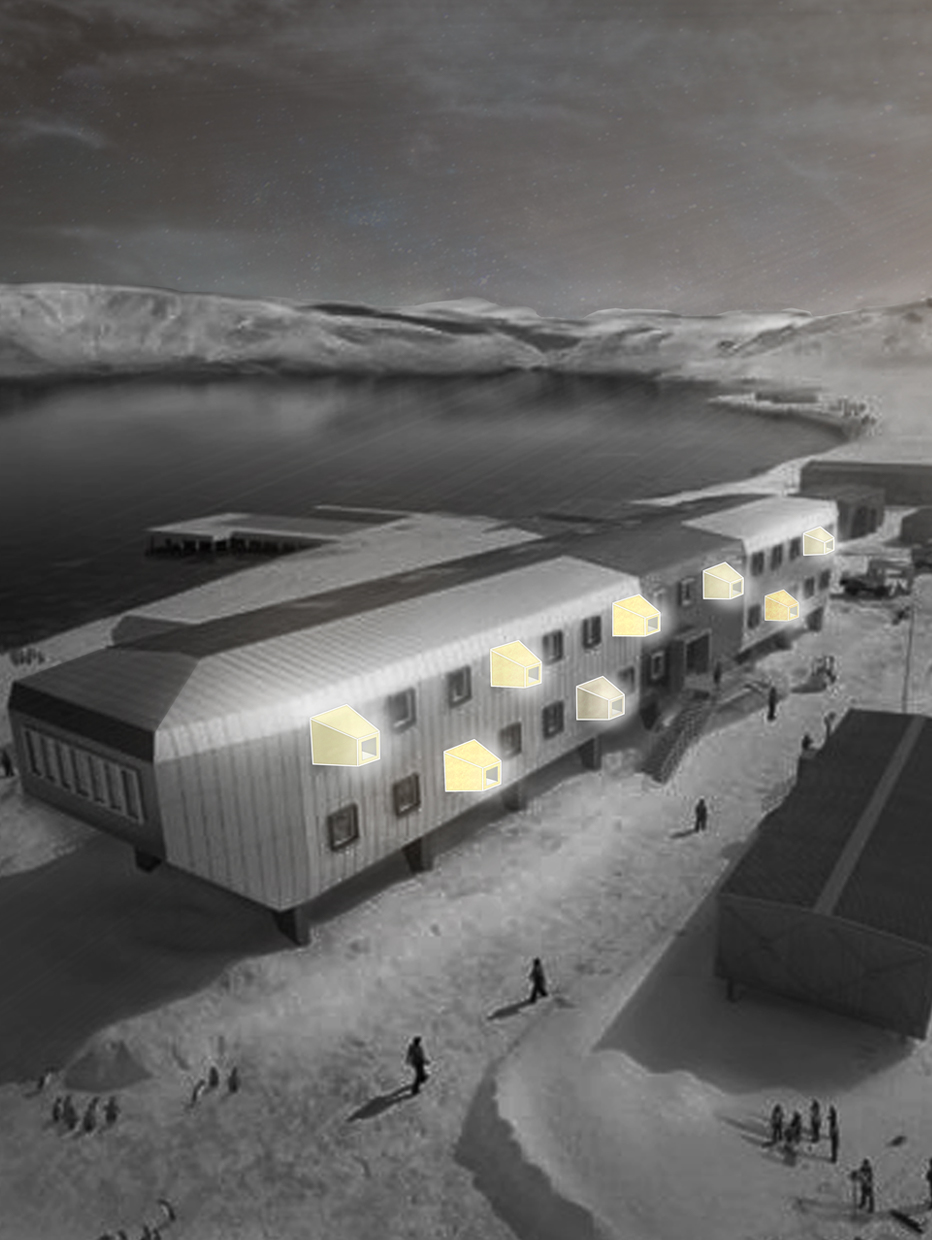Daylight Flow

Category
Daylight in buildings - Region 4: Asia and Oceania
Students
Hyunjin Yoo
Jeongeun Lee
Seongjun Moon
Sujin Yoo
Woojin Shin
Teacher
Hyunbo Shin
School
Hannam University
Country
Korea, Republic of
Download
Download ↓
Why have we been worrying about letting the light in? Is it only good to shine? In the meantime, people have been putting a lot of effort and attention into putting in more sunlight and getting in well, but on the contrary, it has not been well considered on how to effectively reduce it in places with strong light. It has been taken for granted that the sun rises and sets during the day, but there are places that do not. Our project proposes a novel way to regulate light for the daylight of special environments: polar regions where light lies in special environments, white nights in Antarctica, and polar nights.
Antarctica is close to the Earth’s axis of rotation, resulting in a white night phenomenon and a polar night phenomenon where the sun does not set during the year. This natural phenomenon is common and natural in the polar regions as well as Antarctica, but it constantly affects human body rhythms, which eventually leads to health problems.
Currently, Antarctica is the least developed region on Earth, with numerous bases located in Antarctica for national studies and many researchers residing in the country, where white night polarization deprives humans of their natural desire to exist in the dark for at least a few hours a day, and other problems include depression.
Our project goal is to control the body rhythm by controlling indoor illumination through natural lighting, not artificial lighting, in situations where the environment of white night, polar night, and sunlight is limited.
“A telescope and Banta black”Our ‘light chimney’ came up with an idea by looking at a telescope, especially by controlling indoor illumination using the principle of refracting light from the lens.
By using the refractive phenomenon of light of the concave lens and the convex lens, light passes through a thin surface with low speed interference and refracts in the direction of the thick surface of the lens, the convex lens collects light and spreads light to the concave lens to enter the room.
And using the world’s darkest, light-absorbing material called “Vanta Black,” only about half of the light collected and spread by the concave lens reaches the room, reducing the intensity of the light and allowing it to receive limited light at night.
The intensity of polar night and white night light may be adjusted according to the position of the concave lens located in the middle. During white nights, the illumination can be adjusted by spreading more light using concave lenses to reduce the intensity of light by absorbing it, and during polar nights, by minimizing interference of the concave lens to the window and collecting light more effectively. The closer the concave lens approaches the window, the brighter the light intensity, and the farther the concave lens away from the window, the weaker the light intensity. During white nights, the intensity of light can be lowered to darken the illumination, and during white nights, it can be used more brightly.
In order to apply the principle, we apply convex lens, concave lens, and vanta black to the space by applying the structure of square pyramid to the window, which can withstand strong wind and snow in Antarctica, and also help with cognitive problems caused by Blizzard. Also, because there is space, it is very effective for the most important insulation.
This “light chimney” is a module that can be applied anywhere if necessary, and can be applied to windows as much as possible in the extreme natural environment of Antarctica or in polar regions with any white night phenomenon. It is very effective when you want to control indoor illumination using natural light rather than artificial light in a way that only needs to be inserted into an existing window.
Through this project, the goal is to make people who do not fully feel the sunlight of the day, have the right to be dark, and have been forcibly deprived of the right to be bright, feel the flow of the day more actively through sunlight, not artificial lighting.

































